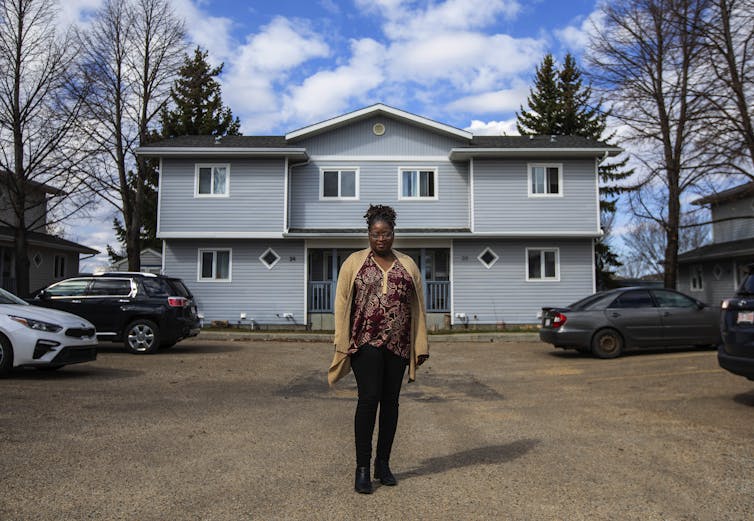
Canada is grappling with a housing affordability crisis. Housing prices and rent have increased dramatically over the past few years. Families are increasingly spending 30 per cent or more of their pre-tax income on housing costs.
High housing costs leave families little money for other necessities like food or health care. They also prevent them from saving for future emergencies. Because of this, limited access to affordable housing is linked with lower life satisfaction and poor mental health.

To address the housing affordability crisis, the Canadian government launched the National Housing Strategy in 2017, which sought to invest $72 billion to increase housing supply.
For this policy to be successful, the government must accurately assess which groups have the most barriers to affordable housing and why they are vulnerable.
Filling the research gap
Prior work has shown that recent immigrants, single mothers and residents of large cities are less likely to live in affordable housing in Canada. Researchers rarely examine whether visible minorities are less likely than white people to live in affordable housing in Canada.
Our new study on Canada’s affordability crisis partially closes this knowledge gap. We used data from the 2016 Canadian Census to document ethno-racial variations in access to affordable housing. Once these patterns were established, we identified why certain ethno-racial groups have less access to affordable housing.

We found that visible minorities have less access to affordable housing than white people in Canada. Unaffordable housing rates were especially high among Middle Easterns, North Africans, East Asians and South Asians.
Not surprisingly, there are different reasons why specific ethno-racial groups struggle with housing affordability. Middle Eastern and North Africans have limited access to affordable housing primarily due to their high unemployment rates. In contrast, rates of unaffordable housing are high for East and South Asians largely because they tend to reside in large urban cities, where housing prices are high.
Lessons from the COVID-19 pandemic
Many visible minority groups in Canada have had disproportionately high COVID-19 infection rates compared to the rest of the population. One reason for this was because visible minorities were more likely to live in overcrowded housing than white people and other minority groups.
These findings suggest that some visible minorities may be grappling with housing affordability problems. To pay the mortgage or rent, they may have to “double up” by moving in with other families. They may also have to live in inadequate housing without necessary amenities like proper ventilation.
Housing vulnerability across immigrant generations
Our study also showed that immigrants were generally more likely than Canadian-born members of their own ethno-racial group to live in unaffordable housing.
Black Canadians, however, were the exception. The unaffordable housing rates of Canadian-born Black people differed little from those of foreign-born Black people. Among the Canadian-born, Black people had the highest unaffordable housing rates, along with Middle Eastern and North Africans.
These findings suggest that most immigrant groups in Canada are able to achieve the socioeconomic mobility necessary to meet their housing needs over time. Black Canadians, however, encounter persistent barriers in access to affordable housing, including racial discrimination in the rental market and in financial institutions.
Policy implications
Four lessons emerge from our study. First, policymakers should increase the housing supply in large cities — like Toronto and Vancouver — where housing prices have increased the most in recent years. These cities are also home to many visible minorities, immigrants and young families, who are struggling with housing affordability.

Second, we need to increase the wages of Canadian workers. Increasing wages offers an alternate solution to the unaffordable housing crisis. This would be a solution for many groups in Canada, including Middle Eastern and North Africans.
Third, greater efforts must be made to remove barriers to accessing affordable housing among Black Canadians.
Lastly, Canadian immigration policies should aim to increase recent immigrants’ access to affordable housing, since they are more likely to live in unaffordable housing. If the federal government plans to welcome 430,000 permanent residents per year over the next three years, it must ensure these residents can afford housing, if they are able to become productive and thriving members of Canadian society.
The National Housing Strategy’s goal is to make affordable housing available to all Canadians. Ensuring that visible minorities have greater and equitable access to affordable housing is an important step in fulfilling that goal.
Kate Choi receives funding from Social Sciences and Humanities Research Council.
Sagi Ramaj receives Doctoral funding from the Social Sciences and Humanities Research Council.
This article was originally published on The Conversation. Read the original article.







